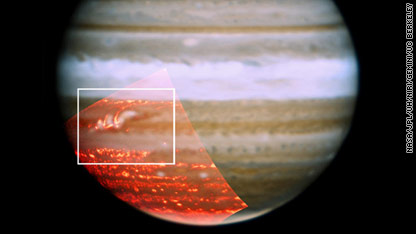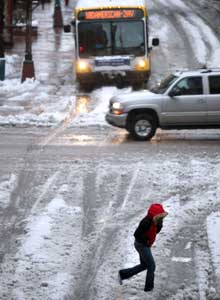Rushford, Minn.
THE news from this Midwestern farm is not good. The past four years of heavy rains and flash flooding here in southern Minnesota have left me worried about the future of agriculture in America’s grain belt. For some time computer models of climate change have been predicting just these kinds of weather patterns, but seeing them unfold on our farm has been harrowing nonetheless.
My family and I produce vegetables, hay and grain on 250 acres in one of the richest agricultural areas in the world. While our farm is not large by modern standards, its roots are deep in this region; my great-grandfather homesteaded about 80 miles from here in the late 1800s.
He passed on a keen sensitivity to climate. His memoirs, self-published in the wake of the Dust Bowl of the 1930s, describe tornadoes, droughts and other extreme weather. But even he would be surprised by the erratic weather we have experienced in the last decade.
In August 2007, a series of storms produced a breathtaking 23 inches of rain in 36 hours. The flooding that followed essentially erased our farm from the map. Fields were swamped under churning waters, which in places left a foot or more of debris and silt in their wake. Cornstalks were wrapped around bridge railings 10 feet above normal stream levels. We found butternut squashes from our farm two miles downstream, stranded in sapling branches five feet above the ground. A hillside of mature trees collapsed and slid hundreds of feet into a field below.
The machine shop on our farm was inundated with two feet of filthy runoff. When the water was finally gone, every tool, machine and surface was bathed in a toxic mix of used motor oil and rancid mud.
Our farm was able to stay in business only after receiving grants and low-interest private and government loans. Having experienced lesser floods in 2004 and 2005, my family and I decided the only prudent action would be to use the money to move over the winter to better, drier ground eight miles away.
This move proved prescient: in June 2008 torrential rains and flash flooding returned. The federal government declared the second natural disaster in less than a year for the region. Hundreds of acres of our neighbors’ cornfields were again underwater and had to be replanted. Earthmovers spent days regrading a 280-acre field just across the road from our new home. Had we remained at the old place, we would have lost a season’s worth of crops before they were a quarter grown.
The 2010 growing season has again been extraordinarily wet. The more than 20 inches of rain that I measured in my rain gauge in June and July disrupted nearly every operation on our farm. We managed to do a bare minimum of field preparation, planting and cultivating through midsummer, thanks only to the well-drained soils beneath our new home.
But in two weeks in July, moisture-fueled disease swept through a three-acre onion field, reducing tens of thousands of pounds of healthy onions to mush. With rain falling several times a week and our tractors sitting idle, weeds took over a seven-acre field of carrots, requiring many times the normal amount of hand labor to control. Crop losses topped $100,000 by mid-August.
The most recent onslaught was a pair of heavy storms in late September that dropped 8.2 inches of rain. Representatives from the Federal Emergency Management Agency again toured the area, and another federal disaster declaration was narrowly averted. But evidence of the loss was everywhere: debris piled up in unharvested cornfields, large washouts in fields recently stripped of pumpkins or soybeans, harvesting equipment again sitting idle.
My great-grandfather recognized that weather is never perfect for agriculture for an entire season; a full chapter of his memoir is dedicated to this observation. In his 60 years of farming he wrote that only one season, his final crop of 1937, had close to ideal weather. Like all other farmers of his time and ours, he learned to cope with significant, ill-timed fluctuations in temperature and precipitation.
But at least here in the Midwest, weather fluctuations have been more significant during my time than in his, the Dust Bowl notwithstanding. The weather in our area has become demonstrably more hostile to agriculture, and all signs are that this trend will continue. Minnesota’s state climatologist, Jim Zandlo, has concluded that no fewer than three “thousand-year rains” have occurred in the past seven years in our part of the state. And a University of Minnesota meteorologist, Mark Seeley, has found that summer storms in the region over the past two decades have been more intense and more geographically focused than at any time on record.
No two farms have the same experience with the weather, and some people will contend that ours is an anomaly, that many corn and bean farms in our area have done well over the same period. But heavy summer weather causes harm to farm fields that is not easily seen or quantified, like nutrient leaching, organic-matter depletion and erosion. As climate change accelerates these trends, losses will likely mount proportionately, and across the board. How long can we continue to borrow from the “topsoil bank,” as torrential rains force us to make ever more frequent “withdrawals”?
Climate change, I believe, may eventually pose an existential threat to my way of life. A family farm like ours may simply not be able to adjust quickly enough to such unendingly volatile weather. We can’t charge enough for our crops in good years to cover losses in the ever-more-frequent bad ones. We can’t continue to move to better, drier ground. No new field drainage scheme will help us as atmospheric carbon concentrations edge up to 400 parts per million; hardware and technology alone can’t solve problems of this magnitude.
To make things worse, I see fewer acres in our area now planted with erosion-preventing techniques, like perennial contour strips, than there were a decade ago. I believe that federal agriculture policy is largely responsible, because it rewards the quantity of acres planted rather than the quality of practices employed.
But blaming the government isn’t sufficient. All farmers have an interest in adopting better farming techniques. I believe that we also have an obligation to do so, for the sake of future generations. If global climate change is a product of human use of fossil fuels — and I believe it is — then our farm is a big part of the problem. We burn thousands of gallons of diesel fuel a year in our 10 tractors, undermining the very foundation of our subsistence every time we cultivate a field or put up a bale of hay.
I accept responsibility for my complicity in this, but I also stand ready to accept the challenge of the future, to make serious changes in how I conduct business to produce less carbon. I don’t see that I have a choice, if I am to hope that the farm will be around for my own great-grandchildren.
But my farm, and my neighbors’ farms, can contribute only so much. Americans need to see our experience as a call for national action. The country must get serious about climate-change legislation and making real changes in our daily lives to reduce carbon emissions. The future of our nation’s food supply hangs in the balance.


















